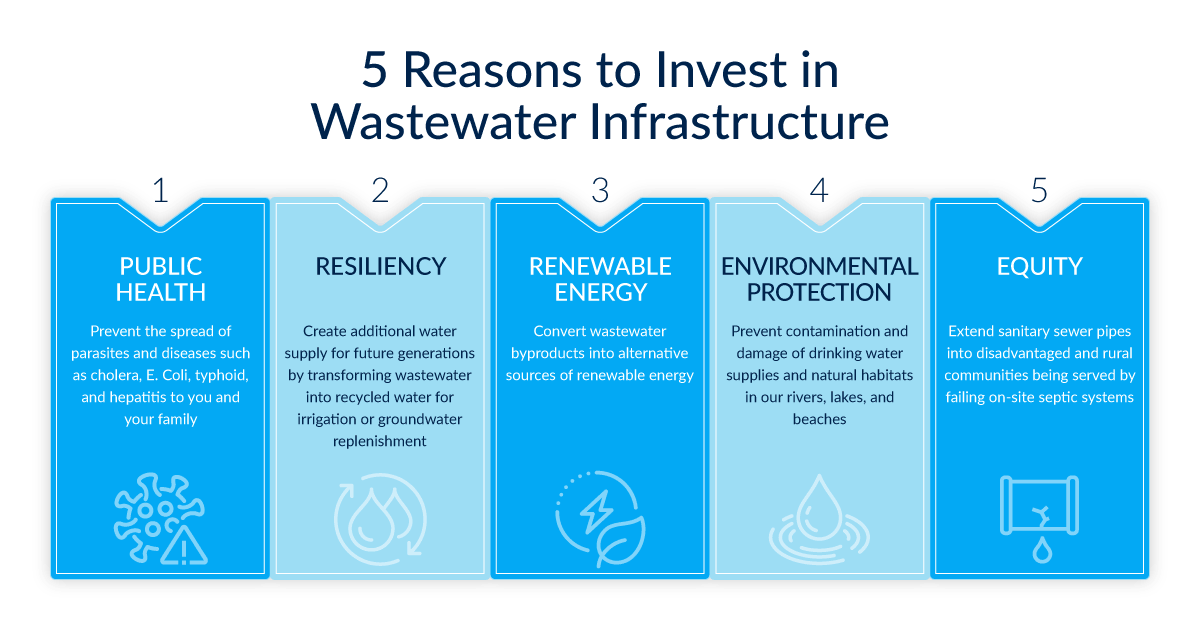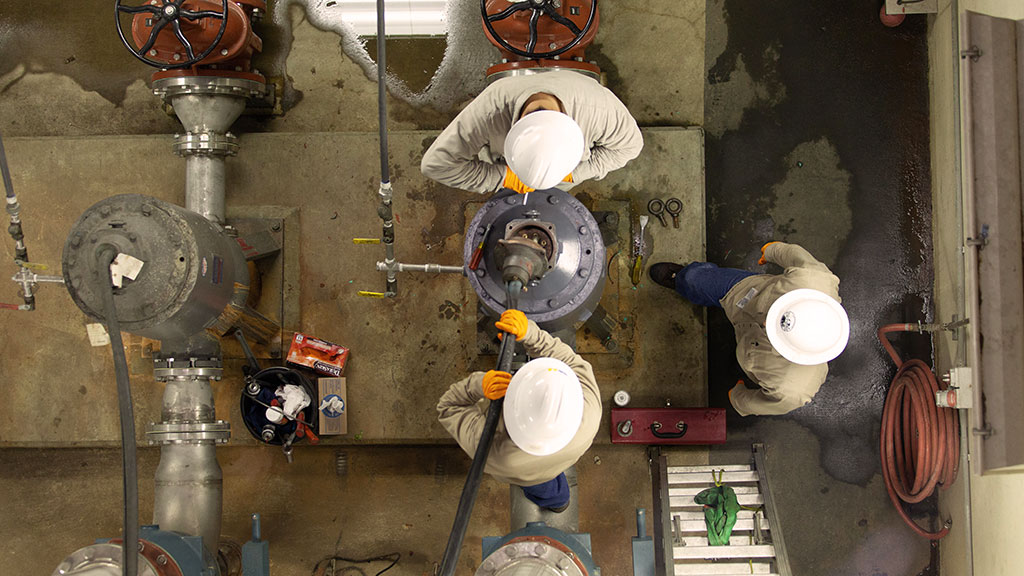If you ask any public health official or historian to list the most important innovations that have increased human life expectancy, you may be surprised to see wastewater infrastructure alongside medical miracles like vaccines and antibiotics. Historically wastewater infrastructure and proper sanitation are what allowed civilizations to grow. Even today, access to such infrastructure directly influences a nation’s health and economy and is what differentiates developed countries from underdeveloped ones.
LA County has come a long way from the simple ditches and pipes that dumped wastewater from then-growing urban areas into fields in the 1880’s, to collection sewers that dumped the raw sewage into the ocean in the 1920’s, to the sanitary wastewater infrastructure we have today. However, our current wastewater infrastructure is aging and requires an influx of federal funding to modernize and refurbish pumping stations and treatment plants, repair or replace cracked pipes that have reached the end of their service life, and to transform wastewater to meet new needs.

Funding for clean water has failed to keep up with inflation and the demands associated with population growth. The American Jobs plan proposes investing $111 billion to upgrade the country’s drinking water, stormwater, and wastewater systems. These investments will achieve an incalculable return-in-investment in the form of protection of the environment and improved public health while also being a catalyst for a robust economy.





Leave A Comment